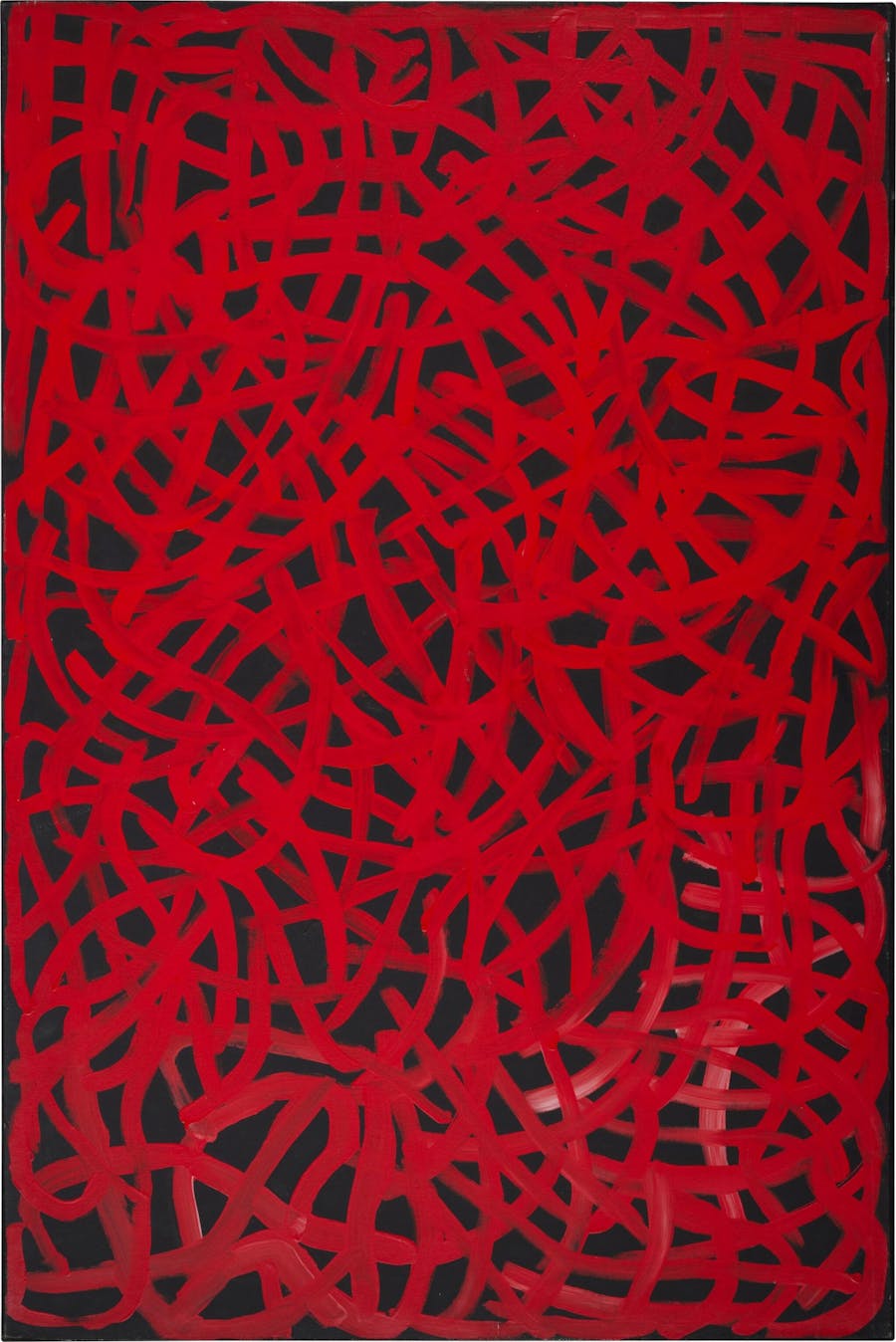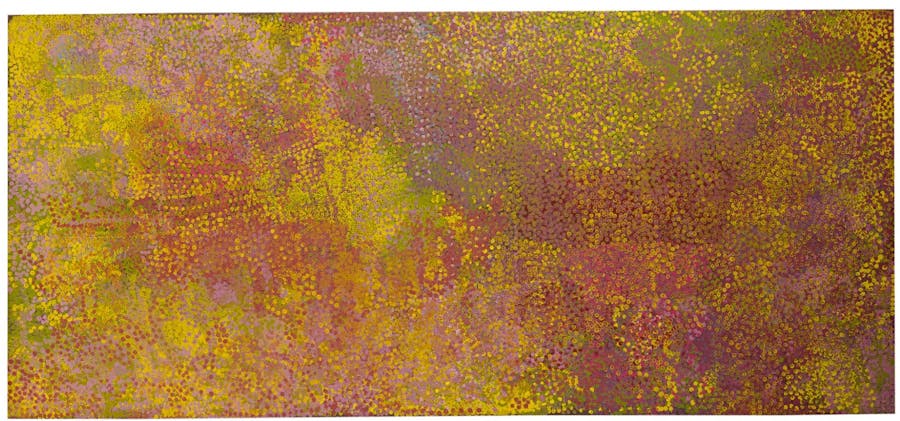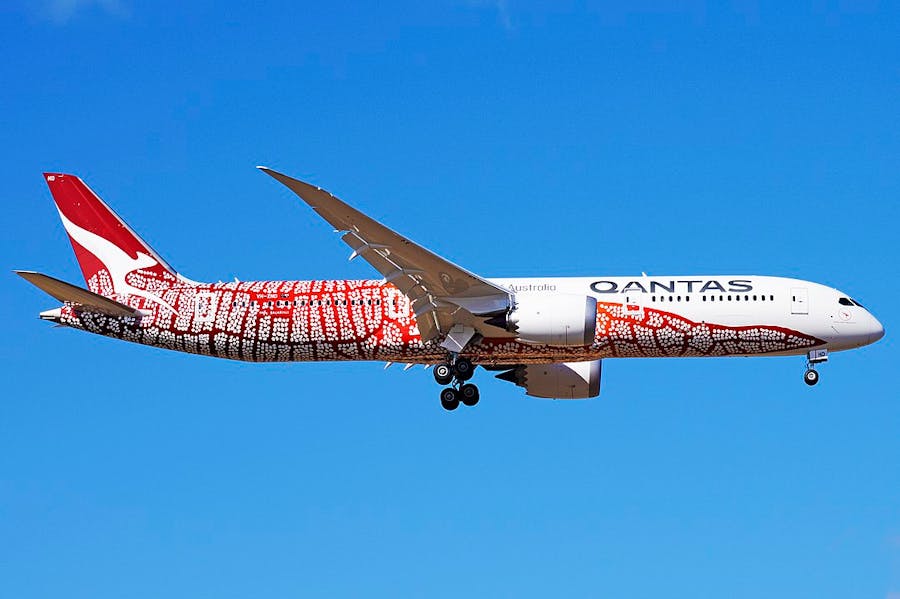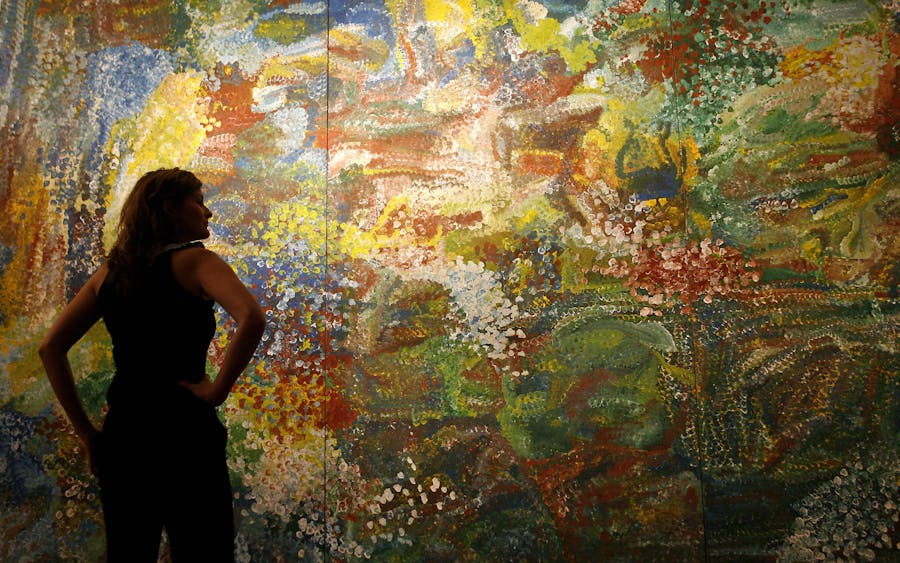5 Facts to Know: Aboriginal Artist Emily Kame Kngwarreye
The leading female Aboriginal Australian artist, Emily Kame Kngwarreye had an extraordinary art career that began late in her life but achieved global renown.
When the Desert Art Movement began in the 1970s in Australia, the artwork, as well as the history, traditions and culture, of Aboriginal Australians from the Western Desert region came definitively into the spotlight. This movement was a response to the Australian government moving several Aboriginal tribes from their native lands in the Western Desert to Papunya, in the Northern Territory of Australia, to claim their property for cattle grazing in the late 1960s. Although the Aboriginal Land Rights Act of 1976 recognized their land ownership, the Aboriginal art community started in Papunya during the earlier part of the decade was the artistic challenge to a culture in jeopardy and flourished from there. Geoffrey Bardon, an art teacher in Papunya, encouraged first his students and then the elders of the community to express their culture and traditions with paint. These spectacular paintings, characterized by rich colors made from natural materials, intricate dot patterns and sweeping designs, are distinctive and tell the stories of their Aboriginal ancestors and how they believe the world came into being, known as their Dreamings or Dreamtime.
Related: Oceanic Art: A Beginner’s Guide
From this Desert Art Movement, the most important female artist was arguably Emily Kame Kngwarreye, who was born in 1910 and grew up in the remote Utopia region in the Northern Territory, living a rural life as part of an Aboriginal community. Today, her work has been recognized globally and is included in some of the most prestigious museums worldwide, as well as fetching seven figure prices at auction.
Here are five facts to know about Emily Kame Kngwarreye:
1. She didn't begin painting until her 70s

For the majority of her life, Emily had worked on cattle ranches and then as a bush worker, which involved cooking and making handicrafts with local materials. She was introduced to art and design through batik, a process of dying cloth different colors in wax-resistant dyes and thereby creating intricate patterns. Originally an Indonesian practice, it was adopted by two Aboriginal women in Emily's region in the 1970s, and by 1978, she had helped found the Utopia Women's Batik Group. Ten years later, women in Utopia were sponsored by an organization to paint and canvases were distributed. By this point, Emily was in her late 70s and took to painting, as batik was an intensive process at her age. She said, "I finally got sick of it ... I didn't want to continue with the hard work batik required – boiling the fabric over and over, lighting fires, and using up all the soap powder, over and over. That's why I gave up batik and changed over to canvas – it was easier." Over the following eight years of her life, she painted prolifically, completing over 3,000 acrylic works.
Related: Grandma Moses: 5 Facts to Know
2. The yam was her most enduring motif

Her homeland, with its unique flora and fauna, can be traced throughout her painted oeuvre. While at first glance her works are abstract, is is the subtle details that reveal aspects of her ancestry, culture and Dreaming. A recurring motif was the yam, a root that was incredibly important to the nourishment of the Aboriginal people, as well as a symbol of fertility and renewal. The pencil yam, a specific type of plant found in Australia, was a part of her Dreaming, and its Aboriginal term is "kame" which is in her name. Many of her works revolve around the yam in abstract depictions of its flower or seeds as a symbol of life and beauty in the harsh landscape of the desert.
3. She represented Australia at the 1997 Venice Biennale
A year after her death in 1996, Emily Kame Kngwarreye's work was featured in an exhibit titled "Fluent" at the Australian Pavilion of the 1997 Venice Biennale. Her work was shown alongside two other Australian Aboriginal female artists, Yvonne Koolmatrie, a weaver, and Judy Watson, a multi-media artist.

The presence of three Aboriginal artists at the Biennale was pivotal at the cusp of the 21st century in introducing their work and culture to the world, as well as showing the important perspective of female artists in a movement that was founded by men.
Related: The 15 Most Expensive Female Artists
4. A plane was named for her

In 2019, an aircraft for Qantas, Australia's largest airline, was decorated with a design inspired by her paintings. The Boeing 787-9 Dreamliner was named Emily Kame Kngwarreye, and the design was based off her Yam Dreaming paintings. Since 1994, Qantas has introduced its "Flying Art" series to promote Aboriginal and Pacific Islander culture and art on its plane designs, linking the ancient past of their Dreaming with the futuristic development of air travel.
Want more articles like this? Subscribe to our free newsletter!
5. Earth's Creation made her Australia's most expensive female artist

In 2017, Emily Kame Kngwarreye's auction record was set with the A$2.1 million ($1.6 million) sale of Earth's Creation (1995), breaking the previous record set by that painting in 2007 and making her the most expensive Australian female artist. The painting was previously held by the Mbantua Gallery & Cultural Museum in Alice Springs, the third largest city in the Northern Territory, which has become the center of contemporary Aboriginal art. Considered her masterpiece, art experts have called it Australia's most important painting. It was sold to Tim Olsen of Olsen Gallery based in Sydney and New York. Today, her work features prominently in all of Australia's top museums, as well as prestigious international museums like the British Museum, the National Museum of Women in the Arts in Washington, and the Art Institute of Chicago.


